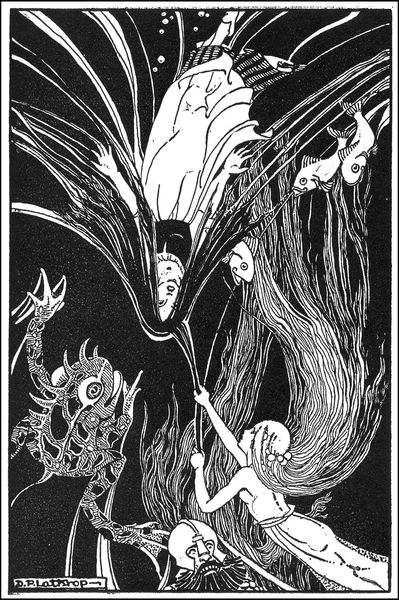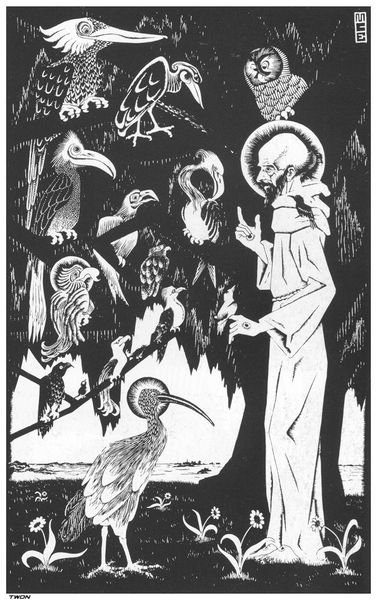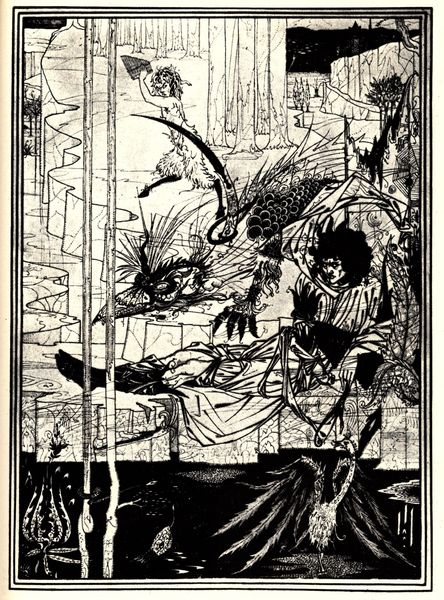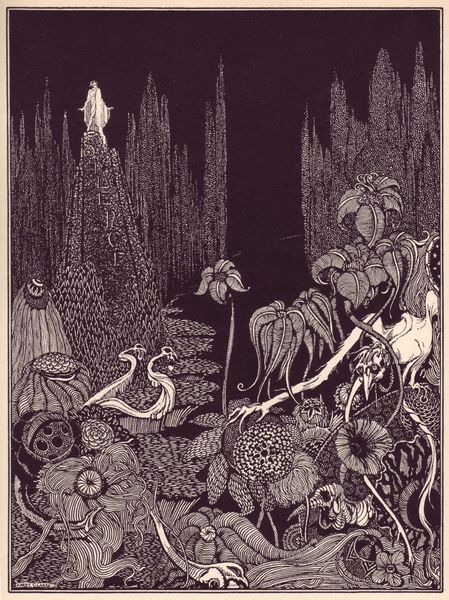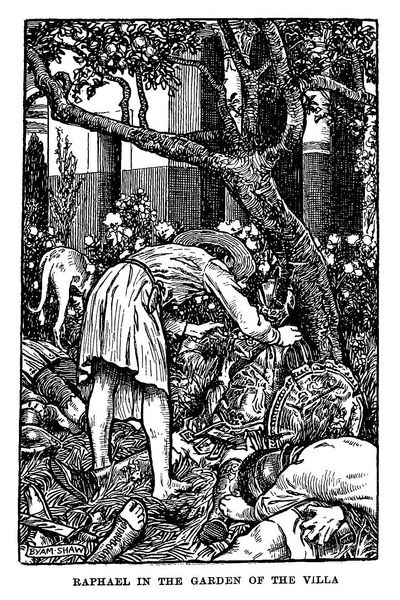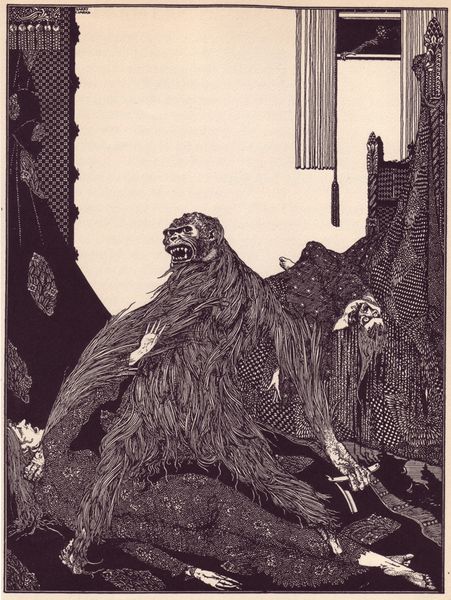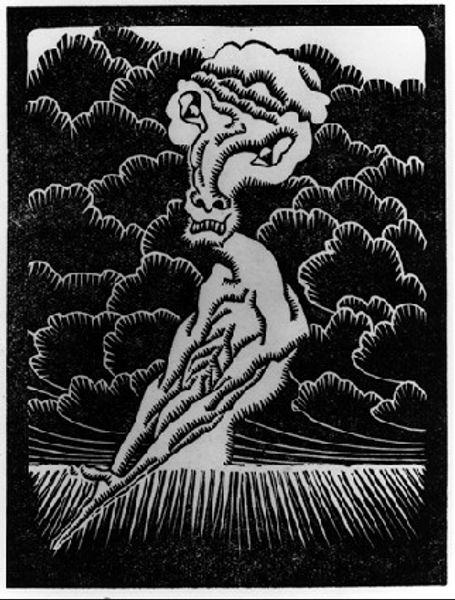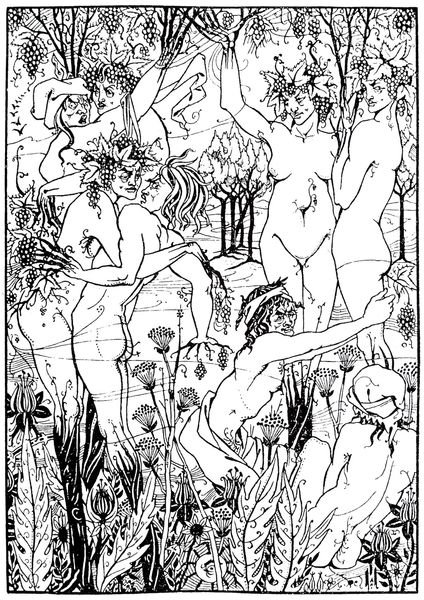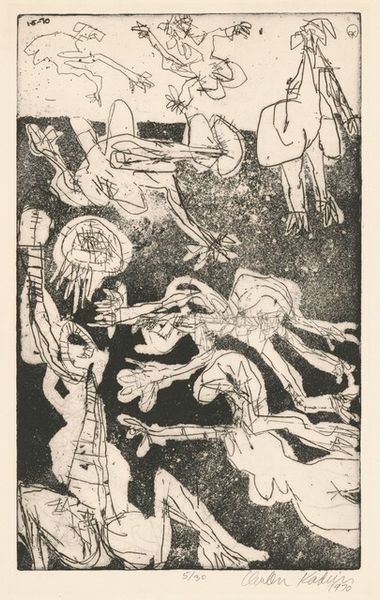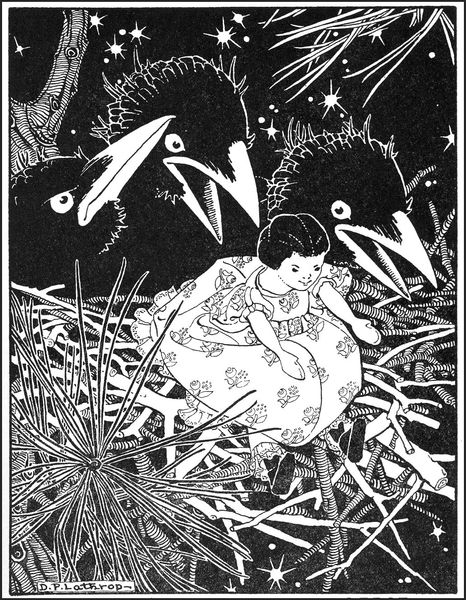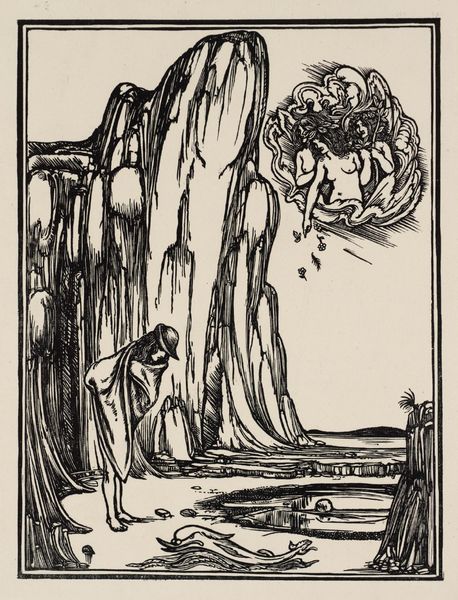
drawing, print, paper, ink, woodcut, engraving
#
drawing
#
medieval
# print
#
landscape
#
figuration
#
paper
#
ink
#
woodcut
#
christianity
#
line
#
history-painting
#
nude
#
engraving
Copyright: M.C. Escher,Fair Use
M.C. Escher made this woodcut, ‘The Fall of Man,’ using stark black lines to carve out light and shadow. The high contrast and repeating forms lend the image a sense of fatefulness, as if these characters are trapped within Escher's self-made, inescapable patterns. Look at the way the black ink bleeds slightly around the edges of the lines. This gives the figures and landscape a tactile quality, grounding the scene in a physical reality, even as the perspective seems to shift and distort. The serpent's checkered pattern is particularly striking, a playful yet unsettling detail that draws the eye. Notice how Escher uses the black and white blocks to wrap around the form of the snake, accentuating its body as it descends from the tree. Escher’s precise but impossible realities connect with other artists preoccupied with the uncanny, like Magritte. Ultimately, what resonates most is the artist’s hand, guiding us through this allegorical scene with a mix of precision and playful ambiguity.
Comments
No comments
Be the first to comment and join the conversation on the ultimate creative platform.
